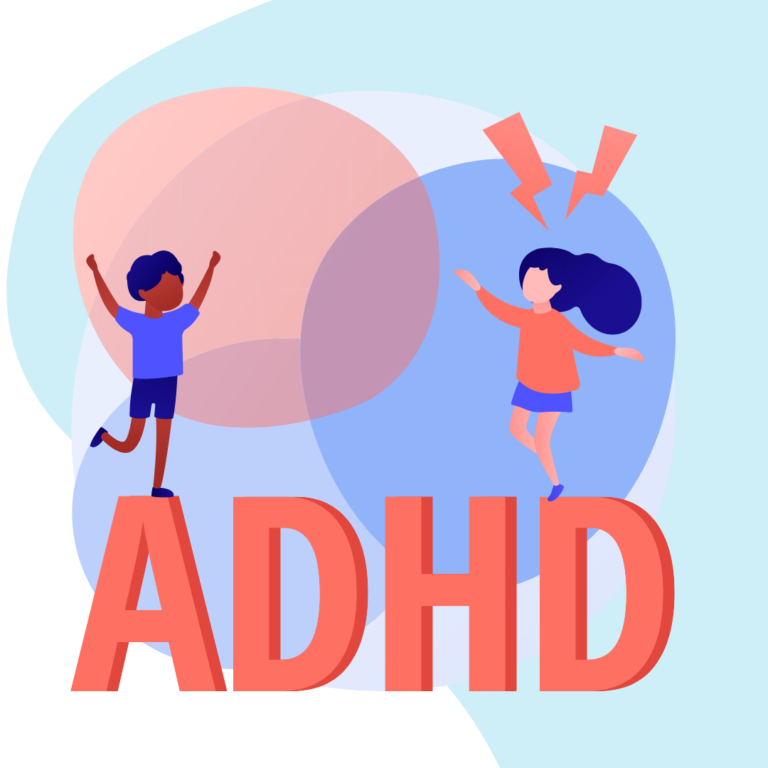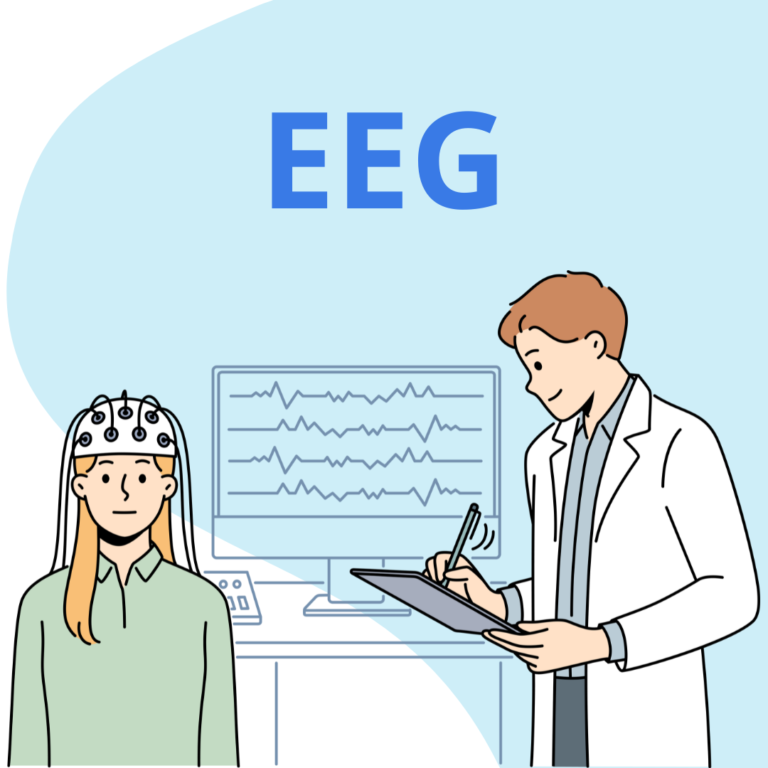In today’s article, you’ll learn how Neurosphera Epilepsy Therapy Centre uses the latest advances in technology to bring epilepsy treatment to a whole new, better level.
Bearing in mind our patients and the doctors who work with Neurosphera, we have developed our own unique solutions and tools that improve the effectiveness of therapy and change the current approach to epilepsy treatment. What does this change involve? What technology it is exactly and how it will impact the epilepsy treatment process? We have summarised the most important information, from the perspective of the patient and the doctor.
Table of contents
Ictal® robot – information for patients
The use of computers in medicine is becoming increasingly popular and necessary. In Neurosphera, we have been looking for a long time for ways to use the achievements of modern technology in the process of treatment of patients with epilepsy. This ambition and mission, years of work and experience, have led to the creation of an absolutely innovative system of patient care – the NeuroTerminal® system.
The name of the system refers in a way to its organisation and reveals its basic functionality. The system consists of a patient terminal and a doctor terminal, integrated and connected to each other. After entering and completing your data and medical history, you can be in constant daily contact with your doctor. Thanks to this, epilepsy care gains a completely new dimension and the doctor-patient communication is convenient and effective as never before. That’s not everything.
Ictal® – the brain of NeuroTerminal
The brain of the NeuroTerminal is the Ictal® robot. It is a special cybernetic module that involves artificial intelligence and machine learning tools. It was developed by doctor Piotr Zwolinski – an outstanding epileptologist and medical partner of the Neurosphera Epilepsy Therapy Centre. Over the years, doctor Zwoliński has catalogued and described the features of several dozen types of epileptic seizures. He has assigned to each of them a set of 100 unique features.
All scientific knowledge has been described in a mathematical way. Additionally, doctor Zwoliński has described and entered into the system over 30 drugs which are commonly used in the treatment of epilepsy in Poland and abroad, as well as recommendations of world-famous authorities and scientific societies regarding the use and dosage of these drugs. This has enabled us to create a huge library of knowledge which can now be used to diagnose and treat patients. Once the patient’s data and information on used drugs are entered into the computer memory, the computer compares them in real time with described cases and world therapeutic recommendations, and provides the attending physician with the diagnosis and suggest appropriate treatment.
The Ictal robot supports the diagnosis and work of our neurologists. It is an advanced tool, or to put it another way – an experienced virtual consultant, whose support is directly used by every doctor working in NeuroTerminal. As a patient, you do not have direct access to it. However, you can be sure that by registering to our system, you will be taken care of not only by the doctor, but also by our robot with artificial intelligence. What advantages does this bring?
Benefits for a patient
All doctors working in the Neurosphera, can use the Ictal robot. Due to this, regardless of the experience and knowledge of individual specialists, our patients can count on a very well organized and standardized therapy – tailored to their individual treatment plan, yet based on comprehensive knowledge and study of other similar cases. The knowledge provided in the system has been developed primarily on the basis of doctor Zwoliński’s many years of medical experience. Due to this, it can be said that each physician creates a treatment equivalent to the knowledge, way of thinking, and potential recommendations of doctor Zwoliński.
Of course, whenever doctor Zwoliński’s consultation is needed, Neurosphera doctors discuss all difficult cases with him during medical consultations. The entire therapeutic path in Neurosphera, due to the use of digital tools, is strictly calculated for the highest possible comfort and convenience of the patient. If you have registered in NeuroTerminal, in the patient panel, you can see how simple the system is to use, and contacting the doctor is now easier than ever.
If you have additional questions as to epilepsy treatment at the Neurosphera centre or about the NeuroTerminal system – take a look at our FAQ section, where we answer the most common questions received from our patients!
Opportunity for difficult, drug-resistant cases
The use of computers and modern technology in the diagnosis and treatment of epilepsy also provides opportunities for therapeutic progress in the most difficult cases. Due to the huge computing powers, we can analyse millions of features in millions of patients at once, in real time. This is the undeniable superiority of the computer over the human brain. No research team is able to work on so many cases simultaneously. Ictal, on the other hand, is able to carry out comparative diagnostics in real time. Therefore, we hope that, in the case of certain severe forms of epilepsy, the computer will find and suggest new patterns that we have not been able to notice and offer solutions, especially in patients in whom all known methods of diagnosis and therapy have so far failed.
The future is in cybermedicine
The use of computers, as well as statistical and computational systems in medicine, has been known for a long time. IBM’s Watson supercomputer has been used for nearly 10 years in oncology diagnostics. It was first used in the diagnosis and treatment of lung cancer by specialists from Memorial Sloan Kettering Cancer Center in New York. In the search for the distinguishing features of certain types of cancer, after the analysis of the data of patients in which there were 8 types of cancer, he found two new ones, which the research teams were not able to see. Therefore, if we want to accelerate and even revolutionise diagnostics and subsequent therapy, it is necessary to expand the possibilities of introducing artificial intelligence, which may not be able to replace a doctor, but gives the physician a weapon due to which the specialist can fight for patients’ health even more effectively.
We believe that in this way we are meeting not only certain trends in cybermedicine, but above all, the expectations and needs of people with epilepsy.
Ictal® robot – information for doctors
The integrated patient care system – NeuroTerminal, is an advanced network (cloud) communication system, which was created by doctor Piotr Zwoliński – an outstanding epileptologist and medical partner of the Neurosphera Epilepsy Therapy Centre, in order to rationalise, unify and raise the level of diagnosis and treatment of epilepsy.
The most important element of the system is the cybernetic module – an internal robot, called Ictal®, which involves the tools of the so-called assistive intelligence. It is a set of mathematical and statistical engines which, when activated, provide an automatic diagnosis of the patient. The robot uses an ontological library created by doctor Zwoliński – a description of several dozen types of epileptic seizures and provided with a unique set of 100 features. Each classified seizure has been introduced as a so-called Model Learning Vector (a sequence of digits). Each seizure feature from 1 to 100 has a mathematical expression – e.g. “1” – feature present, “0” – feature absent. This creates a master vector for the seizure type. After entering the patient’s records, the computer analyses the data and the closer the reference vector is to the description of the patient’s seizures, the closer we get to the described vector. On this basis, the computer makes a diagnosis. In addition, descriptions of all over 30 medications commonly known in Poland and abroad used in the treatment of epilepsy and recommendations of world-famous specialists and scientific societies concerning types of medications, order of use and recommended doses have been entered into the operating memory. In this way, an additional module of automatic treatment was created – suggesting the best, optimal pharmacological path. Data can be entered and processed at any time during the disease, and Ictal® provides results in real time. Thus, the robot will be applicable in any therapeutic situation.
Benefits for a doctor and a medical team
All doctors operating in the NeuroTerminal environment and having the Ictal® robot at their disposal, after entering the patient’s data into the system, can use the therapeutic solutions proposed by the computer according to the current clinical condition of the patient. By implementing cybernetic solutions for epilepsy diagnosis and therapy in daily work, the doctors’ working model standardises and systematises. When the entire medical team begins to react therapeutically in a similar way, the unity and cohesion of work, and thus the quality of treatment, is significantly improved. All the knowledge provided in the system has been developed on the basis of doctor Zwoliński’s medical experience, so it can be said that even a less experienced doctor can propose a therapy equivalent to the potential recommendations of doctor Zwoliński.
This allows diversification of patients within the entire team and thus increases patient turnover in the clinic. A measurable benefit for young doctors, who are e.g. in the process of specialisation, is entering the team, in which due to the “digital assistant” they are automatically allowed to work at the level of experienced colleagues. Of course, all doctors who join the Neurosphera team also have the opportunity to constantly improve their knowledge by participating in trainings and consultations.
Opportunity for difficult, drug-resistant cases
Digitisation of epilepsy diagnosis and treatment also offers opportunities for therapeutic advances in the most difficult cases. Due to Ictal’s enormous capabilities, we can analyse millions of features in millions of cases simultaneously, in real time. No research team is able to work on so many cases, which offers completely new possibilities. Therefore, by using digital tools, we want to take advantage of their most important and irreplaceable benefits: memory, multivariate analysis, i.e. comparing huge areas and finding distinctive features. We hope that in the case of some severe forms of epilepsy, the computer will find and suggest new patterns that we have not been able to notice and offer solutions, especially in patients for whom all known diagnostic and therapeutic methods have so far failed. The entire Neurosphera team has high hopes for the automation and large-scale nature of our work. We can say that this is the right application of the methods of so-called deep learning, or machine learning to medicine, so that much more data can be evaluated, resulting in deeper and broader analysis.
The future is in cybermedicine
The use of computers as well as statistical and computational systems in medicine has been known for a long time. The aforementioned example of IBM’s Watson Supercomputer used in oncology diagnostics is just one example. We believe, however, that just as the Watson Supercomputer has proved exceptionally effective in detecting additional risk factors in the case of cancer, the Ictal® robot will prove to be a technology that will allow us to develop and find even more optimal and effective processes for treating epilepsy.
With our solutions and technologies, we want to accelerate the development of the diagnostics and therapy of epilepsy or even revolutionise it, to introduce a completely new standard of patient care. We believe that with the implementation of assistive intelligence, this is possible. What’s more – it’s already happening, and as a doctor, you can become an important part of it!




